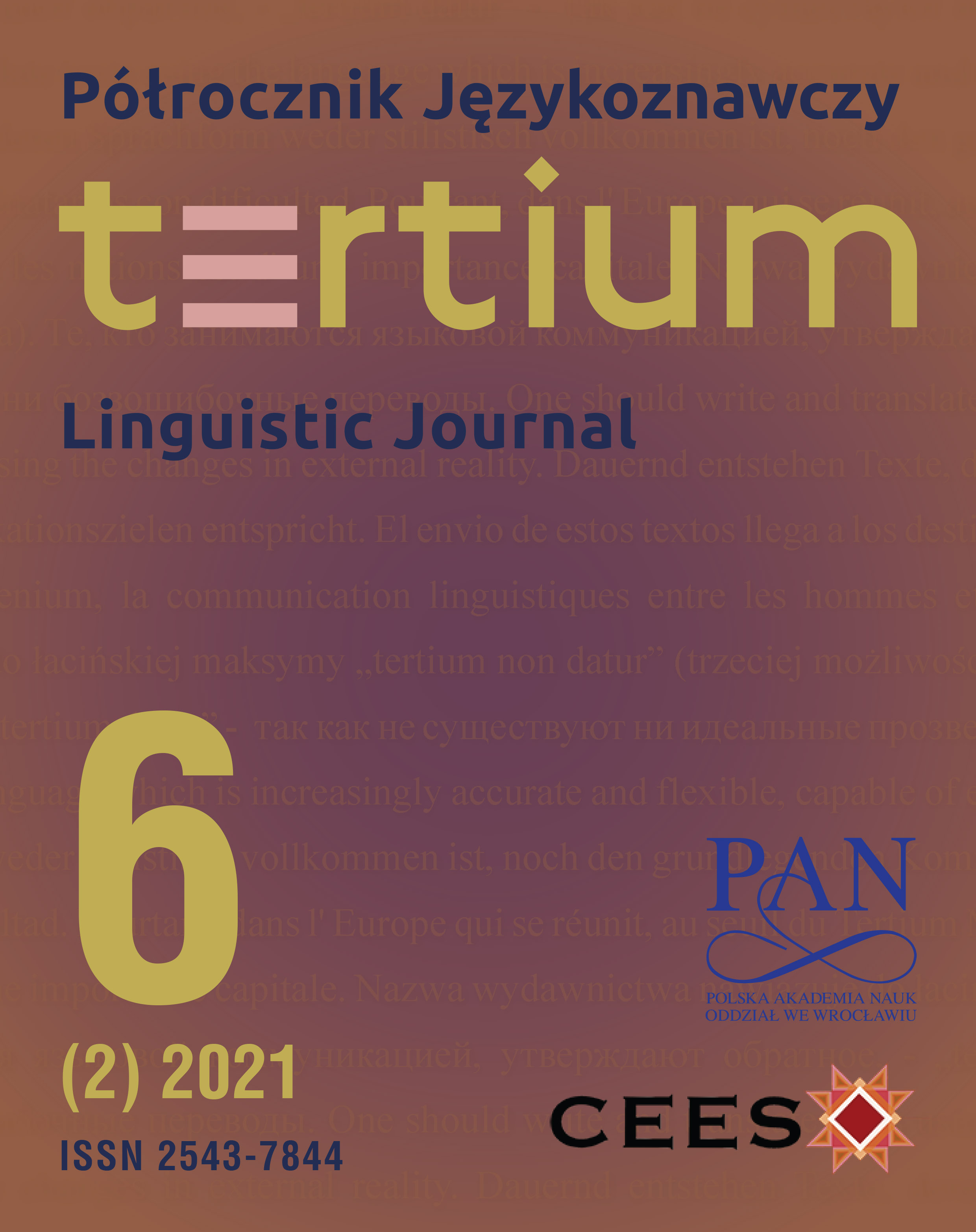O nienaukowym umiłowaniu języka:
On the Naive Love of Language:
How the Content Posted by the Virtual Community “The Language Nerds” Builds up Ingroup Homogeneity
Author(s): Krzysztof OzgaSubject(s): Anthropology, Social Sciences, Language and Literature Studies, Customs / Folklore, Theoretical Linguistics, Applied Linguistics, Sociology, Semantics, Pragmatics, Sociolinguistics, Cultural Anthropology / Ethnology, Culture and social structure , Identity of Collectives
Published by: Krakowskie Towarzystwo Popularyzowania Wiedzy o Komunikacji Językowej Tertium
Keywords: virtual communities; Internet meme; linguistic humour; ambiguity; sociolinguistics social identity; group homogeneity;
Summary/Abstract: Celem artykułu jest analiza treści (postów, memów) publikowanych przez administratora społeczności wirtualnej „The Language Nerds” w serwisie społecznościowym Instagram, a także wybranych, powiązanych z nimi komentarzy zamieszczanych przez członków społeczności zarówno na Instagramie jak i Facebooku. Badanie jest próbą odpowiedzi na pytanie, jakiego typu treści stanowią zasadnicze spoiwo grupy. W tym celu dokonana została klasyfikacja postów w oparciu o wyróżnione w procesie ich kreowania dominanty funkcjonalne. Wyodrębniono sześć zasadniczych klas: 1. memy o dominującej funkcji humorystycznej, 2. zagadki logicznojęzykowe, 3. posty kreowane w oparciu o specyfikę obrazowania pojęć w danym języku (językowy obraz świata), 4. posty o dominującej funkcji metajęzykowej, 5. posty o dominującej funkcji prezentatywnej (charakteryzujące prototypowego członka grupy własnej), 6. posty o charakterze wypowiedzi argumentacyjnych. Następnie każda z klas została szczegółowo opisana i zilustrowana wybranymi przykładami spośród 220 przebadanych postów. Zawartość treściowa wszystkich wyróżnionych klas wskazuje, że zasadniczym czynnikiem integrującym społeczność jest język, przy czym istotna jest wykazana w badaniu różnorodność perspektyw jego wykorzystania jako narzędzia konstruowania tożsamości członków społeczności. W świetle przeprowadzonej analizy statystycznej największą rolę w generowaniu homogeniczności grupy odgrywa humor językowy. // The aim of the article is to analyse the content (posts, memes) published by the administrator of the virtual community „The Language Nerds” on the social networking service Instagram and also selected related comments posted by the members of the community on both Instagram and Facebook. The study addresses the issue of what kind of content serves to build up the integrity of the group. For this purpose a classification of posts was made with regard to the functions dominating in the process of their creation. Six major classes were identified: 1. memes with humour as the dominant feature, 2. logico-linguistic puzzles, 3. posts created on the basis of how notions are conceptualized in a particular language (Linguistic Worldview), 4. posts with a dominant metalinguistic function, 5. posts in which the function characterizing a prototypical member of the ingroup prevails, 6. posts fashioned as argumentative statements. Subsequently, each class was described in detail and illustrated with examples selected from the set of all of the 220 analysed posts. The content of all the classes distinguished in the research indicates that language is the central factor integrating the community, but – as shown in the study – no less significant is the diversity of focus on the particular aspects of language and its use that serves as a tool for constructing the social identity of the community members. The statistics obtained indicate that it is linguistic humour that plays the most important role in generating group homogeneity.
Journal: Półrocznik Językoznawczy Tertium
- Issue Year: 6/2021
- Issue No: 2
- Page Range: 69-110
- Page Count: 42
- Language: Polish

